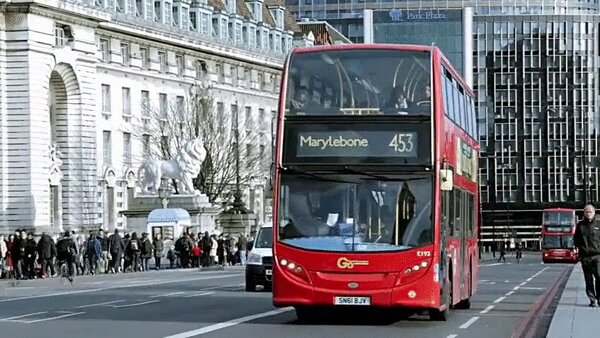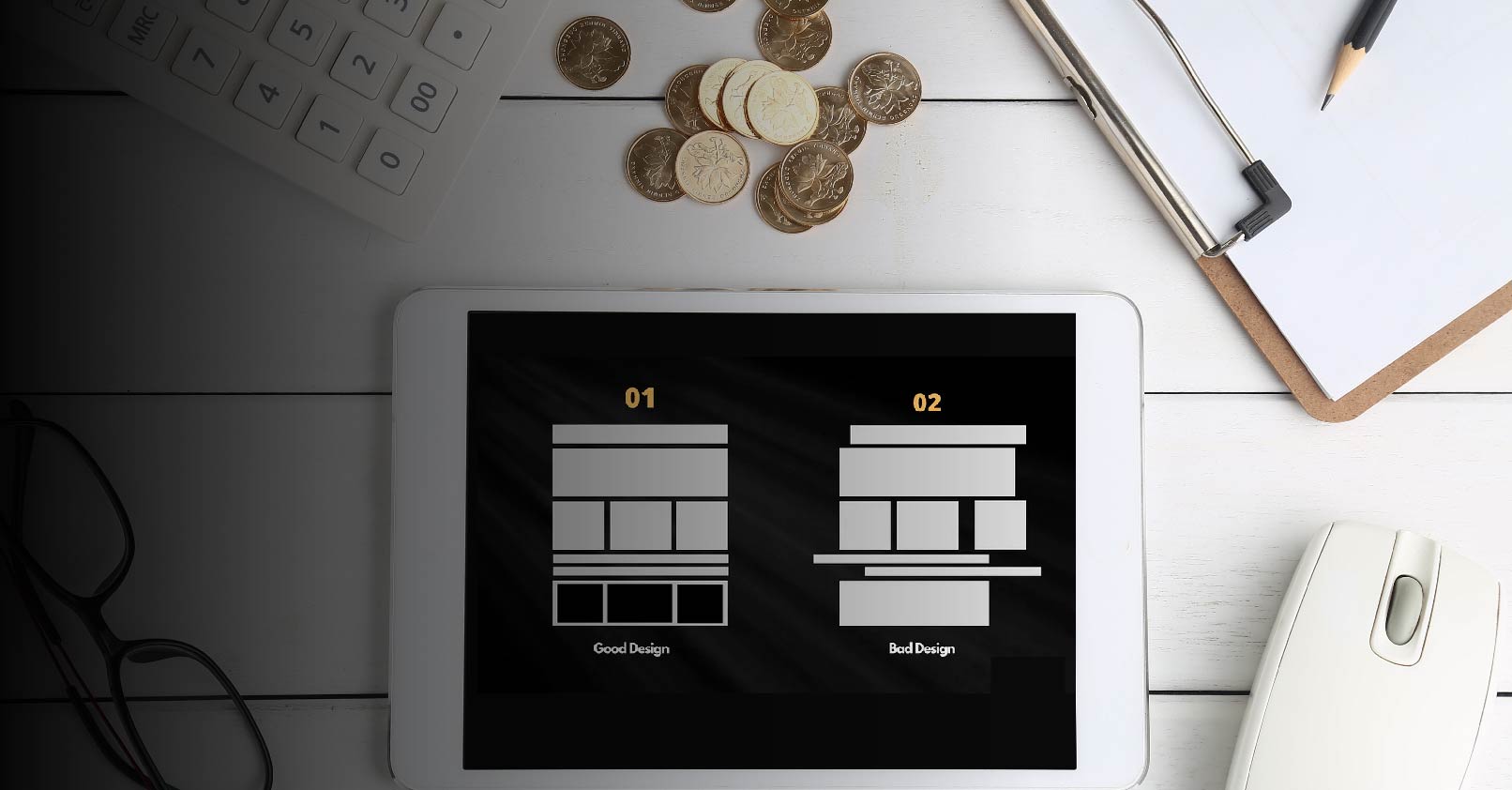Understanding the Impact and Benefits of Design Systems Guide in User Experience
A design system is a collection of UI components, building blocks, and a set of standards with a shared language and visual consistency that enables cohesiveness across tools, platforms, or systems. The reusable components in the design and development part of a design system are the heart of consistency, cost, and cohesiveness for both the customers and the design agencies.
The below image depicts the high-level structure of a design system:
Image Source: UXPIN
The realm of digital experiences thrives on the elegance of design and the sophistication of seamless user experiences (UX). Whether it is about achieving design consistency or accelerating development, these systems serve as a linchpin to meet a gamut of UX needs.
The extraordinary benefits of design systems are not confined to the aesthetic or functional domain. An often-overlooked advantage is their potential for considerable cost savings in UX design . By virtue of streamlining design processes and encouraging component reuse, a central design system effectively reduce the resources required in terms of time, effort, and consequently, monetary investment. The ability to facilitate rapid prototyping, ensure design consistency, and handle updates with finesse positions, design systems act as a catalyst for substantial cost reduction.
Demystifying Design Systems: Driving Cost Efficiency
By standardizing the design process, design systems foster uniformity, increase scalability, and reduce UX design costs. Let’s explore how:
1. Fueling Rapid Development
Design systems incorporate an array of predefined elements such as color palettes, type scales, icons, buttons, dropdowns, and page layouts.
Without a design system, you might have to design interfaces and interactions individually for each product, leading to significant design effort and time. However, with a robust design system, you can reuse components across different products, effectively reducing design and development hours.
Thus, design systems save both time and cost, translating into faster time-to-market and higher profits.
2. Maintaining Consistency
Inconsistent user interfaces often confuse users, leading to a poor user experience. These inconsistencies can arise from different user interfaces, interaction patterns, or even from subtle differences such as varying button sizes or inconsistent typography.
Design systems combat these inconsistencies by providing standardized components and interaction patterns. Reduced user confusion means fewer user errors and, hence, less money spent on user support and bug fixing.
3. Facilitating Easy Updates
In an ever-evolving digital landscape, constant updates are crucial. However, updating individual design components across different products can be time-consuming and costly.
Design systems allow centralized updates, wherein changes made to a component in the design system reflect across all instances where the component is used. This eliminates the need for tedious, manual updates, thus saving substantial costs and effort.
How to measure the tangible impact of the design system?
- Time to build – The hours required to build the component each time it needs to be used. How long does it take to build the component for each use case? E.g. 5 hours of design, 10 hours of engineering, and 5 hours of maintenance = 20 hours
- Time to Implement – How long does it take to implement the component? E.g. 2 hour of design import time and 4 hours of engineering import time – 6 hours
- Scale of Use – How many times does the component appear in product UIs? The number of UIs using the component.
Discover design services with Worxwide Consulting, a top design agency playing a pivotal role in maintaining design coherence amidst rapid change.
The below table shows a tangible comparison of leading design systems – how to choose the right design system?
1. Material Design
Google’s Material Design is a versatile, adaptable design system that combines classic design principles with the possibilities of technology and science. This system follows a set of design guidelines that are meticulously detailed and comprehensive, spanning everything from color, typography, layout, sound, and motion.
Material Design’s rich set of components, practical patterns, and high-quality guidelines allow designers to build a more intuitive and consistent UX, which, in turn, reduces the need for extensive user onboarding and training. This naturally translates into lower costs related to user support.
2. Ant Design
Ant Design, developed by Alibaba, is a React-based design system that provides a comprehensive suite of high-quality components suitable for developing robust web applications.
Ant Design system comprises numerous out-of-the-box components, significantly reducing development time and effort. Instead of focusing resources on building basic interface elements, teams can dedicate their time to creating value-added features, thus maximizing the cost-effectiveness of development efforts. Moreover, Ant Design offers a powerful design toolkit that enables designers to prototype designs rapidly, effectively reducing the time-to-market. It also has a strong global community that provides prompt support and continual updates, thereby saving on potential costs that might arise from troubleshooting and maintenance.
3. Atlassian Design
Atlassian’s design system is a harmonious combination of content, design language, and front-end components, all integrated under a shared set of guidelines.
By providing a shared language for design and development, Atlassian Design reduces the chances of misinterpretation and miscommunication within the team. This leads to faster decision-making, streamlined workflows, and a reduction in the time required to design, test, and release new features, thereby reducing associated costs. It also encourages cross-team collaboration and ensures consistent design output, which can lower user support costs due to an intuitive and uniform UX across products.
4. Carbon Design System
IBM’s Carbon Design System is a comprehensive, open-source design system that combines a vast set of guidelines covering all aspects of design, from styling and layout to components and patterns.
Carbon provides reusable, accessible components and guidelines for web and product design, significantly reducing the time and effort spent on creating new components and ensuring accessibility compliance. This leads to a considerable reduction in costs related to design and legal compliance.
5. Audi UI
Audi UI, the design system developed by Audi, focuses on the development of automotive user interfaces, representing an embodiment of Audi’s distinct branding. This system features a minimalist design language, robust typography, and an interface that emphasizes usability and efficiency.
The simplicity-focused approach of Audi UI allows for the creation of less cluttered, more efficient interfaces, which can lead to significant cost savings. Moreover, by emphasizing a minimalist design language, Audi UI helps reduce the time and effort required to make design decisions. This leads to faster production cycles and lower associated costs.
Reaping the quantitative benefits of the Design system
A flexible design system always upscales the business requirements in terms of cost benefits and managing resources. Its healthy user interface acts as a point of contact between the technology and its user, creating a smooth sailing experience.
Furthermore, a protean design system also helps in translating a business idea into a resourceful prototype that helps in figuring out the problems, leading towards mandatory solutions to provide users with an effective developmental experience.
Apart from saving time and money, a design system is capable of several other benefits through ways like:
Augmented Product Quality – Any amount of time saved is equal to money saved. A well-qualified and friendly design system will ensure user loyalty and higher returns. In most cases, money invested wisely has doubled after producing a resilient design system.
Unswerving Style and Usability – For a user to gauge the product as easy to use, easy to understand, and comfortable, the same elements and styles are repeated periodically in the design system. This in turn results in consistent user behavior.
Rapidly Revamping Global Products – A consistent and existing design structure helps in improving its features frequently so that it keeps up with the ever-evolving trends of the market. This way it becomes easier for a product to adapt itself and lend an updated user experience.
Unified fount of edifice – Behind every successful product there is a happy and productive team, which functions well around a clear code to produce an organized design structure. This proposition helps in eliminating the bus factor, creating a friendly work environment, and deploying more human resources.
How PayPal leveraged on their investment returns with UXPin Merge – Current example
It is a fact that a solid design tool helps in maximizing value for the customers by finding end-to-end comprehensive solutions. Most recently PayPal reinvented their design and development processes by collaborating with UXPin Merge.
PayPal faced an extreme challenge in upscaling its UX structure without hiring new designers or scaling the design department. By utilizing UXPin Merge, PayPal managed to empower its product teams to create newer products and features which was eight times faster than an experienced UX designer could generate after using traditional vector-based design tools.
Conclusion: Capitalizing on the Power of Design Systems in UX
Reflecting on the design systems discussed – Material Design, Ant Design, Atlassian Design, Carbon Design, and Audi UI – it becomes abundantly clear that their potential is not confined to streamlining design workflows or ensuring aesthetic consistency. Each of these systems encapsulates a world of economic benefits, serving as powerful cost-cutting tools. Whether it’s through the provision of reusable components, clear design guidelines, or efficient update mechanisms, these systems significantly reduce design redundancy and associated costs.
Yet, while the economic advantages of these systems are compelling, it’s crucial to recognize that the true power of a design system lies in its ability to synergize with the organization’s unique needs and culture. A design system should not be perceived merely as a tool but as an intrinsic part of the organization’s design ethos. When chosen wisely and integrated effectively, it can contribute to a superior, uniform user experience that saves time, reduces costs, and upholds the brand’s identity across various platforms. With emerging technologies such as artificial intelligence and virtual reality reshaping the digital landscape, these systems will play a pivotal role in maintaining design coherence amidst rapid change.
How Worxwide Can help?
Worxwide can help identify the right design system that fits into your existing organization, scales with your chosen technology architecture, and aligns with the speed, cost, and visual aspects.
Our proposed UX design studio at Worxwide serves as a testament to the axiom that ‘good design is good business.’ By harnessing its power, we not only save on costs but also create digital experiences that are engaging, inclusive, and memorable.
Worxwide Consulting is a digital growth consulting firm that helps companies drive digital growth by improving user and customer experience. We help companies with end-to-end product design or UX design services that include research, strategy, design, test product designs, and prototypes. Worxwide is based out of US, UK, and India offering bid consulting, sales transformation, user experience, and customer experience design services.
tx, USA

London, UK

India


